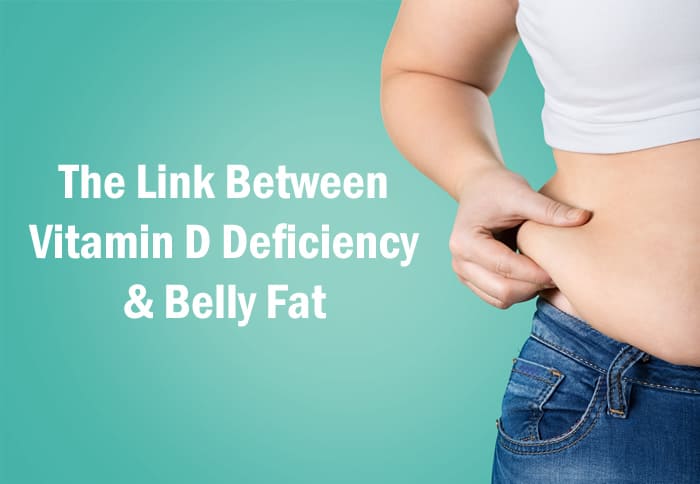

Vitamin D deficiency is a big health issue worldwide. The main reasons for this include:
- Not spending enough time outside in the sun.
- Not eating enough foods rich in vitamin D, like fish and fortified dairy products.
- Being overweight, especially having too much fat around the belly area.
When people are overweight, the vitamin D they consume doesn’t work as effectively. This is because vitamin D gets stored in fat, making it less available for the body to use. This can lead to problems like inflammation, diabetes, and heart diseases.
How Are Vitamin D and Fat Related?
To better understand how vitamin D and fat are related, researchers used a special imaging technique called ultrasonography to study fat deep inside the belly. (1)

They wanted to see if there’s a specific amount of this deep belly fat that affects how vitamin D works in the body.
The main goal of their study was to figure out if there’s a specific point where the body’s storage and use of vitamin D is affected by this deep belly fat. Understanding this could help find better ways to manage vitamin D levels in the body, which is crucial for overall health.
Between 2020 and 2022, researchers from a hospital in Verona, Italy studied 58 patients who visited their internal medicine outpatient department. They only included patients who were Caucasian, overweight or obese (BMI ≥ 25), and had low vitamin D levels. Patients who were taking specific medications or had certain health conditions like kidney or liver issues were not included in the study.
To see the effects of vitamin D, the researchers took blood samples from the patients before and after giving them a high dose of vitamin D (50,000 IU cholecalciderol per month) every month for 6 months. Using ultrasonography they measureed different types of fat in the body, like belly fat, before and after the vitamin D treatment. They even calculated a body fat index using a specific formula that considers a person’s hip size and height.
The Findings About Vitamin D and Belly Fat
Vitamin D has an important role in fat cells and might be stored or held back by them, affecting its availability for the body.
In this research:
- There was a clear link between belly fat and vitamin D levels. People with more belly fat tended to have lower vitamin D levels.
- Men and women showed different patterns in how their body shape related to vitamin D levels. For men, their waist size was a key indicator, while for women, the ratio of waist to hip size mattered more.
- Even after giving some participants extra vitamin D, many didn’t reach normal levels, especially those with more belly fat. This suggests that excess belly fat might block the body from using or releasing vitamin D effectively.
- Physical activity might help by releasing vitamin D from fat cells, so staying active can be beneficial for those with excess belly fat.
- The study provides guidelines for doctors, suggesting specific measurements of belly fat that could predict vitamin D improvement with treatment. However, the study had limitations due to its size and specific focus, so more research is needed.
Conclusion
In light of these findings, individuals who are overweight, especially those with increased belly fat, should consider discussing vitamin D supplementation with their healthcare provider. Given that excess belly fat may hinder the body’s ability to use or release vitamin D effectively, supplemental intake might be necessary to ensure optimal vitamin D levels and support overall health.





